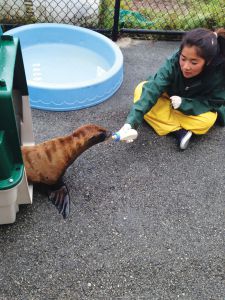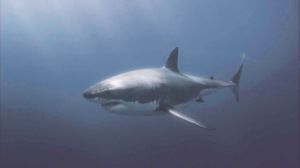
In the heart of the Marin Headlands near Rodeo Beach lies the Marine Mammal Center, a nonprofit veterinary research hospital and educational center that focuses on rescuing, rehabilitating, and releasing injured mammals.
About two to four aquatic mammals are treated for shark bites every year in Northern California, according to Adam Ratner, guest experience manager at the Marine Mammal Center.
According to Ratner, great white sharks are the species most commonly found in Northern Pacific waters, and therefore the most likely to attack a seal or sea lion. Ratner added that great white sharks are common at the Farallon Islands in the fall.
The most common patient at the Marine Mammal Center is the California sea lion. However, they also frequently treat elephant seals, and will care for any animal that needs help.
“We had an animal earlier this month here for a shark bite, rescued in September and released in early October, but it is one of the more uncommon reasons why we rescue and treat marine mammals here at the center,” Ratner said.
Junior Maia da Silva has worked at the Marine Mammal Center since January and said she has seen and dealt with animals who are victims of shark attacks firsthand.
“It’s mostly sea lions that we see the shark attacks with, and it’s crazy—they have chunks taken out of their sides,” da Silva said.
The treatment assigned to each seal or sea lion can vary depending on the severity of the injury. Da Silva said that many mammals receive stitches or other operations to treat their injuries. However, sometimes it can be just as valuable to feed the animals and let their bodies heal with time.
Da Silva recounted one astounding situation with an injured animal at the Marine Mammal Center.
“He was a sea lion, and he had a crab trap wrapped around his snout that was cutting into his nose and his canine teeth were exposed, and they had to give him facial reconstruction surgery,” da Silva said. “We released him after a few weeks, and it was just an amazing recovery.”
In her four years working at the Marine Mammal Center, senior Mia Poynor has seen a number of shark bite victims, including one animal that particularly shocked her.

“The seal had this giant gash the size of a big notebook, and it was really bloody and didn’t stop bleeding for about four weeks,” Poynor said. “It was really sad because it was infected and the seal was in enormous pain.”
Poynor mentioned that the blood on the wound was clotting and not healing properly, so to keep the wound fresh, doctors scrubbed at the sensitive skin. She said that this was clearly painful for the seal, as it began to cry.
“They cry actual tears, and their eyes are really big,” Poynor said.
Poynor and other volunteers take part in the animals’ daily care.
“There’s a lot of cleaning, because like any hospital, you have to make sure everything is sterile. We also get to weigh animals and move them to different pens, and administer medication,” Poynor said.
Senior Jake Trusheim has volunteered at the Marine Mammal Center for three years.
“Birthing season [for seals] is from February to March, so there are a lot of young that don’t know how to defend themselves, so they can be possible targets for the sharks,” Trusheim said of common shark attack victims.
Da Silva said that while she has seen shark victims, most of the sea lions and seals at the center are there because of malnutrition and entanglement, and they have to be tube fed because they don’t know how to eat whole fish yet as pups.
“You take a rubber tube and stick it down their throat, and you have to make sure you get it in the right place. It’s very adrenaline-rushing,” Poynor said.
The Marine Mammal Center often releases animals back into their natural habitats at Rodeo Beach.
“It depends on whatever condition they are in, but the goal is that they should be able to survive on their own in the wild, so even though they may be eating fine at the center, if we don’t think they can compete with predators in the wild, then we won’t release them yet,” Trusheim said.

















